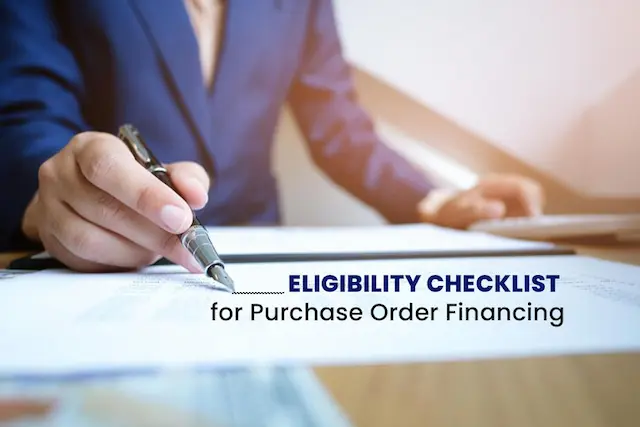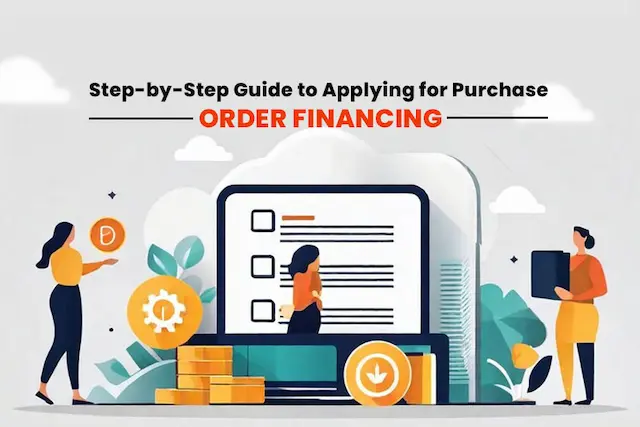In the very dynamic business world, managing cash flow imposes a critical challenge on businesses, especially small businesses. As companies keep looking to seize growth opportunities, not being able to handle and utilize funds wisely is a serious threat to any company’s growth. In such cases, Purchase Order Financing and Invoice Factoring comes to the rescue.
This guide below is an attempt to unfold purchase order financing Vs. factoring for the readers.
What Is Purchase Order Financing?
Purchase order financing is a financial arrangement between a seller and a financial institution where the latter agrees to fund the supplier’s customer’s purchase order. In some cases, the entire purchase order is financed, while in others, only a portion of it is. It’s used when a business needs funds to complete an order.
What is Invoice Factoring?
Invoice Factoring is a financial arrangement between a seller and a financial institution, also called the factoring company, where the latter agrees to buy unsettled invoices of the business and in return pay immediate cash to it. With factoring, a company will provide you with upfront payment for most of the invoiced amount, and then take charge of collecting payment directly from your customers.
Purchase Order Financing Vs. Factoring: A Glance Comparison
Have a quick look at PO Financing Vs. Factoring:
Purchase Order Financing
Typical Advance Rate: 100%
Typical Funding Amount: $10,000 to $10 million
Repayment Term: Up to 90 days
Estimated Fees: 1% to 4% per 30 days
Estimated APR: 20% to 80%
Funding Speed: 2 to 21 days
Invoice Factoring
Typical Advance Rate: 95%
Typical Funding Amount: $20,000 to $5 million
Repayment Term: Up to 90 days
Estimated Fees: 1% to 3% per 30 days
Estimated APR: 20% to 70%
Funding Speed: 1 to 3 days
How PO Financing Works?
Get a quick insight on how PO financing works:
1. Purchase order financing starts with the company receiving a purchase order from a customer. Once the purchase order is issued, the company becomes eligible to apply for PO financing. Also remember that only those orders are eligible for PO financing that involve tangible goods.
2. When you give the PO to your supplier, they will give you an estimate of the cost required to fulfill the order. This estimate includes expenses for shipping, distribution, delivery, and other production fees.
3. Now you can apply for PO financing after you’ve researched enough about the companies that provide such facilities. Credlix offers both PO financing and invoice factoring services to businesses. It provides quick funds to fulfill purchase orders and purchase outstanding invoices, helping businesses manage cash flow and grow effectively. It starts with filling out an application form.
4. Once the financial company approves your application, it will issue funds to the supplier. In most cases, you make payments using a letter of credit, which informs your supplier that you are using a third-party company for funding.
5. Based on what the terms are with your supplier, they will start with the production based on what the customer’s order is. Once the goods are produced or assembled, the supplier will typically take care of delivering the products to your customer.
6. Once you fulfill the order, you can now send an invoice to your customer asking for the final payment. The cost of PO financing can depend on the time your customer takes to make the payment. The longer the time, the higher the charges.
7. When your customer settles the PO financing, you get the amount minus the fees charged by the financial company.
Also Read: A Complete Guide on Purchase Order Financing: What it is & How it works?
Pros & Cons of Purchase Order Financing
Pros:
Quick cash flow in the business.
Easy qualification like your credit score.
You can fulfill more orders.
Cons:
Sometimes, it might take weeks for the funds to get approved.
Only tangible goods are eligible for PO financing.
How Invoice Factoring Works?
Get a quick insight on how invoice factoring works:
1. Unlike PO financing, invoice factoring requires the goods to be delivered to your customers. Once the goods are delivered, the company issues an invoice that’s considered by the factoring company to provide you with instant funds.
2. Once you issue the invoice, you can reach out to a finance company to pay an advance against your unpaid invoices if you want faster payment. To be eligible for faster payment, your customer must be creditworthy, and the invoice must state that they will settle the payment within 90 days. Online lenders, brokers, and banks can provide this cash facility.
3. Now it’s time that your customer gets informed of the finance settlement that has been made between you and the financing company. Though payment terms remain the same, your customers must be aware of this third-party involvement.
4. The final stage starts with the financing company receiving the payment from your customers. The company deducts its fees and issues the rest of the balance to you.
Also Read: Guide to How Invoice Factoring Works
Pros & Cons of Invoice Factoring
Pros:
Customer’s creditworthiness can get you quick funds.
No collateral required.
Fast funding
Cons:
Customers get to know about the settlement made.
Some providers may require a contract for a minimum time frame, increasing costs.
Qualification Requirements For PO Financing & Factoring(h2)
Purchase Order Financing:
Credit Score: None
Time in Business: 0 to 12 months
Annual Revenue: None
Profit Margin: 0% to 25%
Qualifying Order Types: Orders involving tangible goods
Eligible Customers: Manufacturers, distributors, wholesalers, and other types of suppliers
Contract Required: No
Invoice Factoring:
Credit Score: None
Time in Business: 0 to 6 months
Annual Revenue: $0 to $500,000
Profit Margin: None
Qualifying Order Types: Completed orders already sold and delivered to customers
Eligible Customers: Business and government entities
Contract Required: May be; 0 to 12 months
Deciding Between Purchase Order Financing and Factoring For Your Business: Making the Right Choice(h2)
Deciding between purchase order financing and factoring for your business depends upon multiple factors, like the types of products you sell, your industry, and most importantly, the financial needs of your company. Below are some tips that will help you make the right choice:
When to Choose PO Financing?
If you are a business that needs to first pay a third party to buy raw materials or carry out the production process, PO financing would be the right choice for you. This method can free up your limited cash flow, which you can use for other major business operations. It also provides you with the freedom to fulfill customer orders that otherwise would have been tough if you paid your vendors upfront.
If Your Business Is Dependent On Outside Suppliers: If you are a distributor, reseller, or any similar business, purchase order financing is a great financial tool to pay for the production and delivery of goods. It frees up the funds to be utilized in other parts of the business.
You Are Unable To Meet Demands: If you are required to pay a third party to complete an order you received but have insufficient funds, PO financing can help you by providing funds against your purchase order.
Seasonal Sales Trend: If your business has major operations during one season of the year, PO financing can be the right choice for you. It might happen that your order graph goes up during a particular season, and you will need to fulfill those orders. In that case, PO financing can be your ultimate rescue.
Your Company Aiming at Growth: Unfortunately, many startups struggle to fulfill their business orders, especially during the initial stage. Capital insufficiency is the main cause. PO financing is the best way to boost your company’s order fulfillment capacity.
When to Choose Invoice Factoring?
If you have already sold goods to the customers, but your payment is due, Invoice Factoring helps you clear your cash flow in that case by providing advance against your unsettled invoices. As per the credit terms, the receiver is liable to settle the payment between 30-90 days. Invoice factoring can help you deal with the cash shortage in that case.
Your Customers Are CreditWorthy: Invoice factoring relies majorly on the creditworthiness of your customers. It’s a fact that your own creditworthiness has less or no impact on invoice factoring.
Your Customers are Business Or Government Firms: Invoice factoring can be used for outstanding invoices issued to businesses or government agencies. It cannot be used for amounts owed to you by individual consumers.
You Need Quick Funds: If your business needs quick funds infusion, like within one to three business days, invoice factoring gets more votes for your business.
To Conclude
PO financing and invoice factoring are financial solutions to handle cash flow challenges the right way. PO financing funds purchase orders, while invoice factoring provides immediate cash against unpaid invoices. Each has pros and cons, so businesses must choose based on their specific needs and circumstances. Also, companies like Credlix make it a hassle-free, convenient, and profitable financial affair for you.





